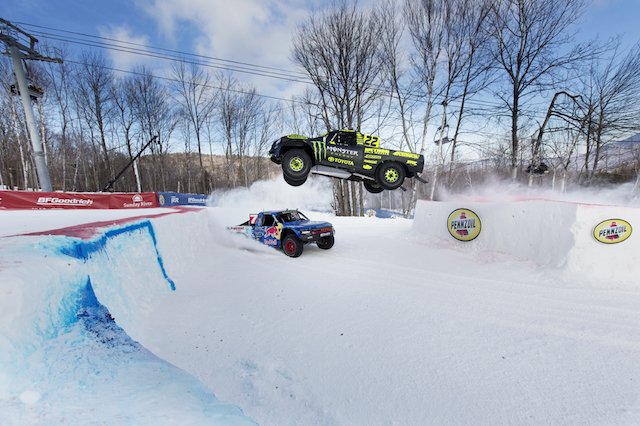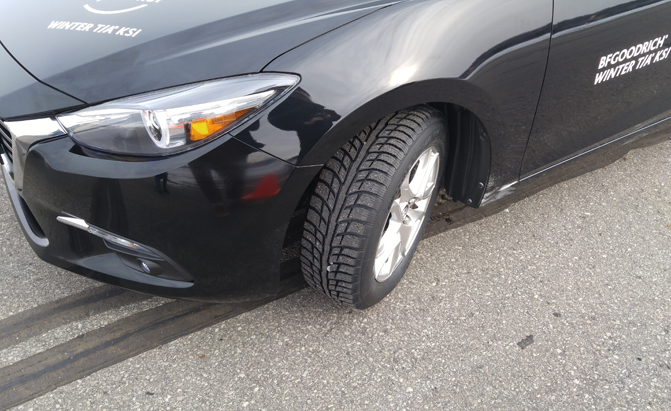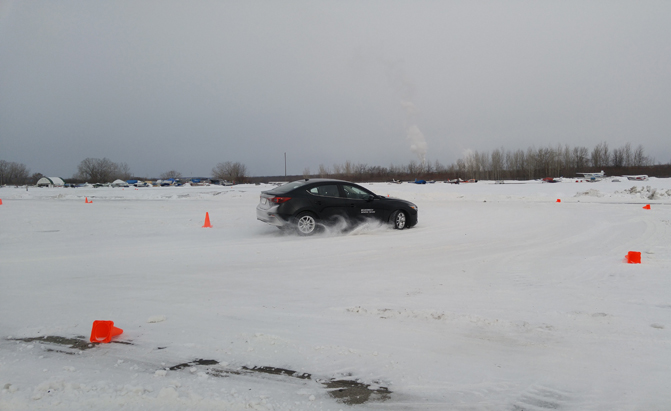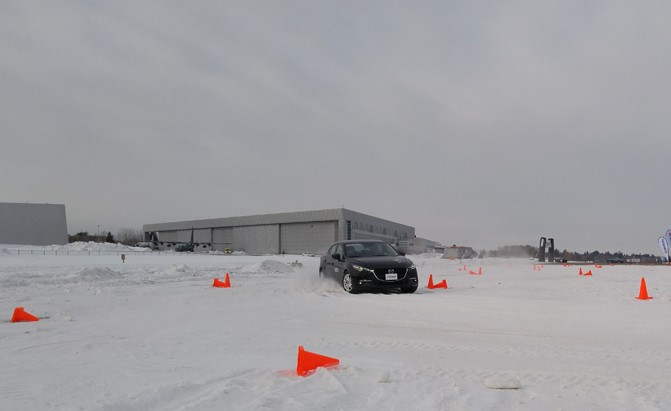Drivers who opt to drive in the snow without dedicated winter tires end up crawling along at the limit of their ill-suited rubber. It’s like showing going jogging in Converses — you do it, and probably get away with it, but it’s not going to be as comfortable or safe as going jogging in the right shoes.
Winter tires have their compromises, though, and can feel strange in dry weather. Fortunately, the new BFGoodrich Winter T/A KSI feature an interesting new design that helps them balance driveability in the dry with traction in the snow and ice.
What business does BFGoodrich have making winter tires? The tire company is best known for its aggressive off-road rubber, the All-Terrain T/A KO2 found on desert runners and rock crawlers, which was designed after the race spec version of the tires used in the grueling Baja races. Most of the other tires in the brand’s lineup have some motorsports heritage as well, but BFGoodrich is kind of quiet on the snow front. They ended that silence, however, when they sponsored and took part in an event called Red Bull Frozen Rush.

The Frozen Rush is basically a race between two trucks on the snowy battlefield of an alpine ski hill. It’s crazy and looks like a blast. Naturally, having a lot of grip is necessary for racing up a ski hill in the snow, and although our needs aren’t as intense as these trucks, we need grip during our winter commutes too.
ALSO SEE: These Are The Best Winter Tires You Can Buy
The Winter T/A KSI tires replace the old Winter Slalom KSI and come with a number of important elements in its design and construction. The tire maker has used a lot of silica in the compound of the tire, which is an important element for winter tires because it helps with grip on ice. Silica is a sand-like filler material in tires that helps the rubber stay soft and flexible in cold weather, which helps it maintain grip. It’s also helpful in the wet, something that would prove useful on a wet, slushy winter day.

Another important trait of these tires is the additional sipes. Sipes are little slits and cuts in the tire that provide additional surface area to grip snow and ice. Sipes are also associated with a squirmy feeling on dry roads, however, but BFGoodrich has a clever solution in place. The sipes interlock with each other, which gives them extra stability and should help the rubber feel like regular tires on dry surfaces.
The new Winter T/A KSI also features a directional tread pattern and a higher speed rating in comparison to the outgoing Winter Slalom KSI, which should help its appeal to a wider audience of car buyers.
ALSO SEE: Why You Absolutely Need Winter Tires, Even If You Have All-Wheel Drive
At a BFGoodrich-hosted event, we tested the new Winter T/A KSI and a few of its rivals in three different situations. Comparable tires from Toyo (the Observe GSi-5), Yokohama (IceGuard iG52c), and Firestone (Winterforce) were fitted to new Mazda3s and Honda CR-Vs to showcase the differences in capabilities between these tires and the new BFGoodrich offering.
On an ice-covered slalom course, we tested the CR-V with the Toyo Observe GSi-5 tires and the BFGoodrich Winter KSIs by getting through the course at a steady 19 mph (30 km/h). While both tires slid on the ice, the Winter KSI tires gained traction in a progressive way. It resulted in less wild sawing at the steering wheel than when we were behind the wheel of the Toyo-equipped vehicle.
We also did a ice braking test with a Mazda3. Firestone Winterforce tires were set to take on the Winter KSIs. While both tires reacted quickly on the ice, the Firestone tires brought the car to a stop in a longer distance, often a car length or two more than the BFGoodrich rubber.

Finally, we had a skid-pad of ice to test the stability of the Winter KSIs and the Yokohama IceGuard iG52c tires with the Mazda3. Driving around this ice patch was a blast with lots of tail-happy sliding, but in a real-world setting, you wouldn’t want your slide around this much. The car with Yokohama tires was frequently letting its back end out, and bringing the car back into line took some countermeasures and effort. In the car with Winter KSI tires, the car slid predictably and progressively regained traction, making them easier to live with and more confidence inspiring for drivers.
Winter tires are essential for driving your car through the snow and ice. While all-season tires tout capability in any weather condition, they’re really just a safety and convenience compromise. The new BFGoodrich Winter KSI tires showed some clear advantages over their competitors when tested in the snow and ice. They go on sale in Fall 2017, in 32 commonly used sizes. An additional six sizes will be joining the range in mid-2018.



Leave a Reply